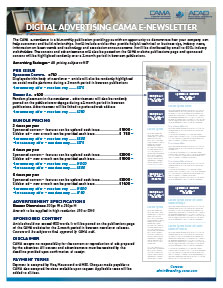New COVID eye protection requirement what you need to know
Employees who work indoors within two metres of an unmasked person must wear appropriate eye protection and masks to help prevent the spread of COVID-19, says the Ministry of Labour, Training, and Skills Development. Ministry inspectors are now enforcing this requirement.
The eye protection requirement was first introduced in healthcare settings, where it has been highly effective, says Wagish Yajaman, WSPS' Manager, Specialty Services. Now it applies to all provincially regulated workplaces if employees, in the course of providing services, are required to come within two metres of another person - indoors or outdoors - who is not wearing a mask or face covering and is without an adequate shielding barrier (e.g. plexiglass, partition, wall).*
Why eye protection is required
COVID is transmitted through the air via infectious droplets expelled by people carrying the virus, including people who have already been vaccinated. These droplets could come into direct contact with the mucous membranes of our eyes.
"To reduce the risk of transmission, all points of entry on another person within two metres need to be protected," explains Wagish. "With just a mask, we are only protecting two of those points of entry, the mouth and nose. A third point is the eyes."
Educating yourself is the first step in implementing a COVID-related eye protection program, says Wagish. We've put together a Q&A to answer questions about the requirement.
What's driving this requirement?
The Ministry of Health has determined a high risk of COVID-19 transmission exists if a masked worker is not wearing eye protection when working within two metres of another person - masked or otherwise - for more than 15 minutes. This is due to several factors, including the rapid spread of highly transmissible COVID variants and improper use of masks.
"Most masks don't cover the area around the eyes," says Wagish, "and people also inadvertently touch their eyes with their hand."
What types of eye protection help prevent transmission of COVID?
Face shields, safety goggles and safety glasses with side shields. Prescription eyewear is not suitable on its own because it is open around the periphery, says Wagish. All eye protection, including face shields, must be used in conjunction with a mask or face covering.
Does eye protection against COVID-19 need to be CSA approved?
No, says Wagish. Any type of eye protection is acceptable so long as it covers the front and sides of the face. However, CSA approved eye protection is required to protect against other workplace hazards, such as projectiles or impact.
What do I need to consider when purchasing eye protection against COVID-19?
Make sure it fits properly and does not interfere with the proper fit of a mask. In the case of goggles and safety glasses with shields, you don't want workers to have to keep pushing them back up and touching their face.
"Comfort is another factor," says Wagish. "How much pressure is it putting on the temple or the bridge of the nose?"
How should we remove protective eyewear?
Wash your hands. Grasp the side arms and lift away from the face without touching the front of the eyewear, then wash your hands again.
How should we sanitize eye protection, and how often?
Disinfect between each use with disinfectant wipes approved for use against COVID-19. Avoid sharing eye protection among workers.
Public Health Ontario outlines these steps for disinfecting:
- Clean hands and put on a pair of gloves.
- Wipe the inside of the eye protection first and then the outside.
- Ensure all surfaces remain wet for the disinfectant contact time (e.g. 1-3 minutes).
- Rinse with tap water and allow to dry.
- Remove gloves and wash your hands.
- Store the eye protection in a clean, designated area.
How WSPS can help
Check out these online resources:
- Using masks in the workplace, a Government of Ontario guidance
- Goggle Up (WSPS infographic)
- Personal Protective Equipment (guideline)
- Cleaning and Disinfection of Reusable Eye Protection (Public Health Ontario infographic)
Reference
*Wearing a mask indoors is a requirement under the Reopening Ontario Act, as stated in Using masks in the workplace https://www.ontario.ca/page/using-masks-workplace. Since the Occupational Health and Safety Act requires employers to take every precaution reasonable in the circumstances to reduce potential exposure to a hazard, inspectors with the Ministry of Labour, Training and Skills Development may apply the eye protection requirement to both indoor and outdoor settings if the work being performed involves workers who are required to be working within two metres of an unmasked person due to the way their work is organized.
Have health and safety questions? Please contact Denise Lam, WSPS Account Manager, Small Business at Denise.Lam@wsps.ca.
About Workplace Safety & Prevention Services (WSPS)
Workplace Safety & Prevention Services (WSPS) is a not-for-profit organization committed to protecting Ontario workers and businesses. A proud partner in Ontario’s occupational health and safety system and a trusted safety advisor since 1917, WSPS has a rich history of making Ontario workplaces safer. WSPS serves the manufacturing, agricultural and service sectors. WSPS offers unparalleled health and safety expertise, consulting, training and resources for businesses of any size. For more information visit WSPS.ca.
Copyright information
This article was prepared by Workplace Safety & Prevention Services (WSPS). At WSPS we are committed to helping businesses understand their risks and legal obligations to stay in compliance and build safer workplaces. If you would like permission to republish or use information in this article, please contact Jessica Bowes, External Communications Lead at jessica.bowes@wsps.ca.


%202023.png)


